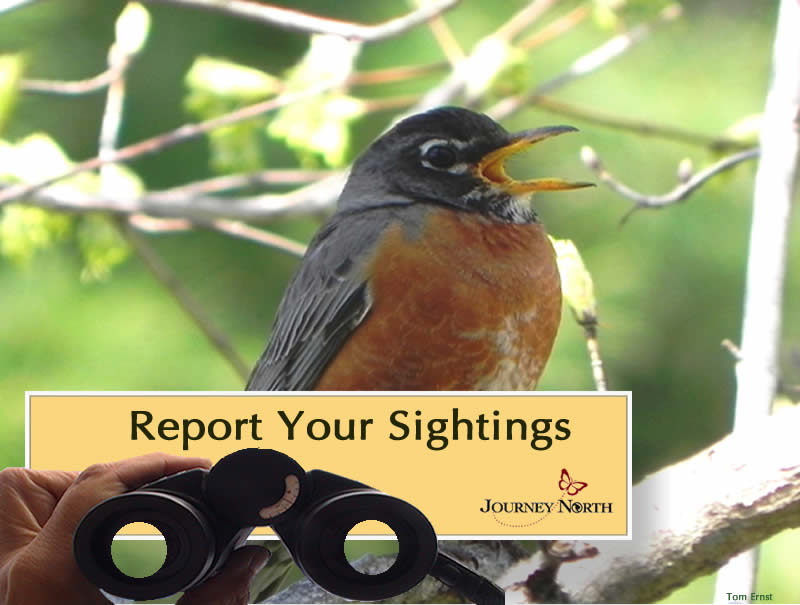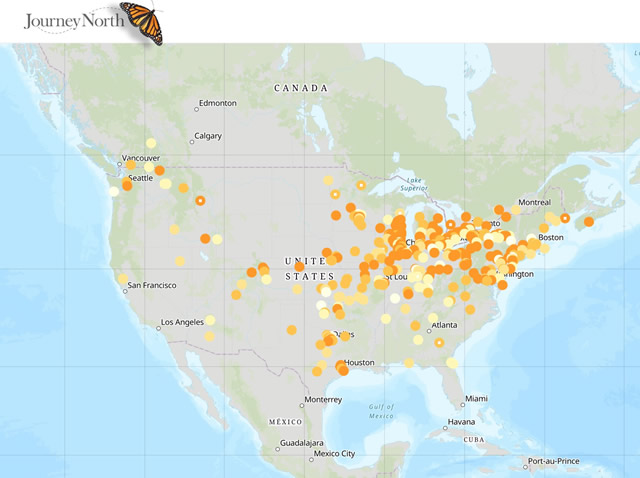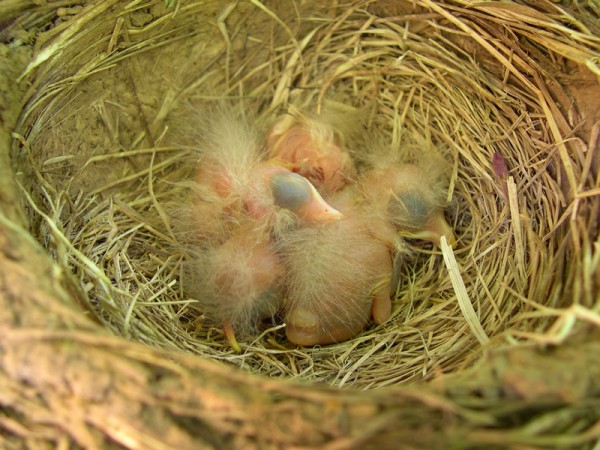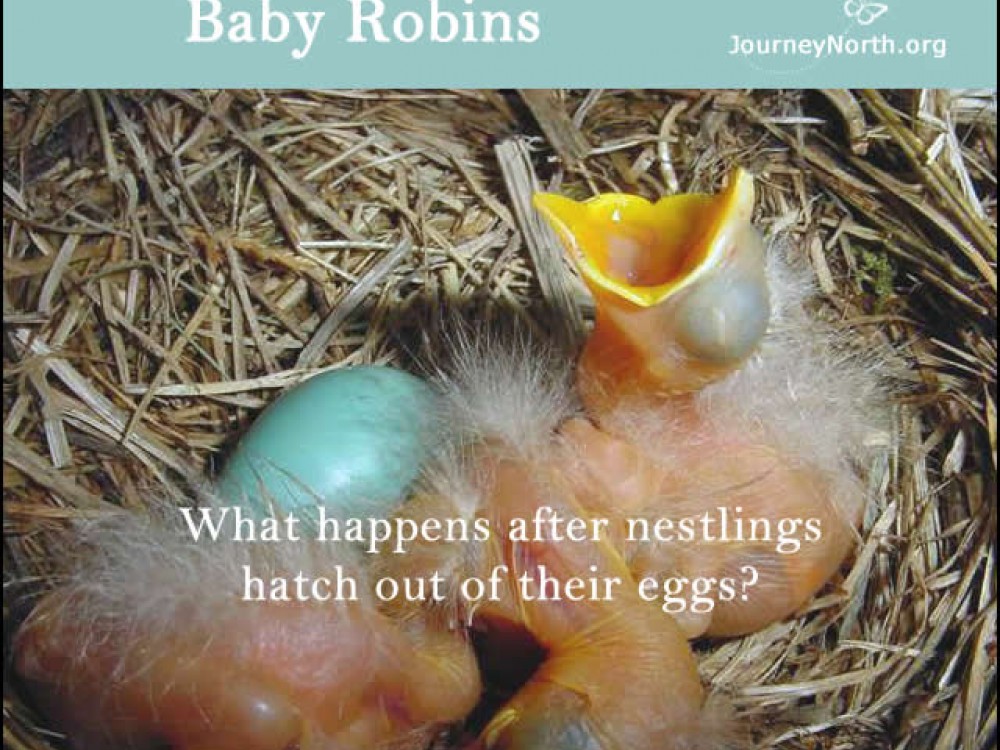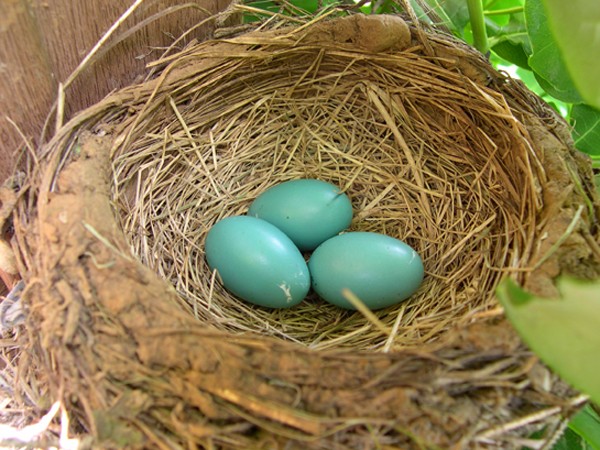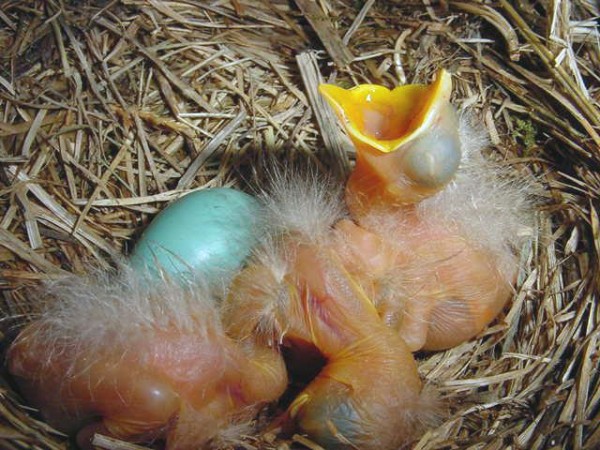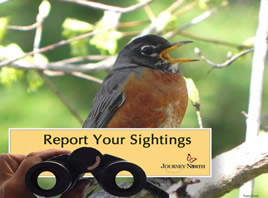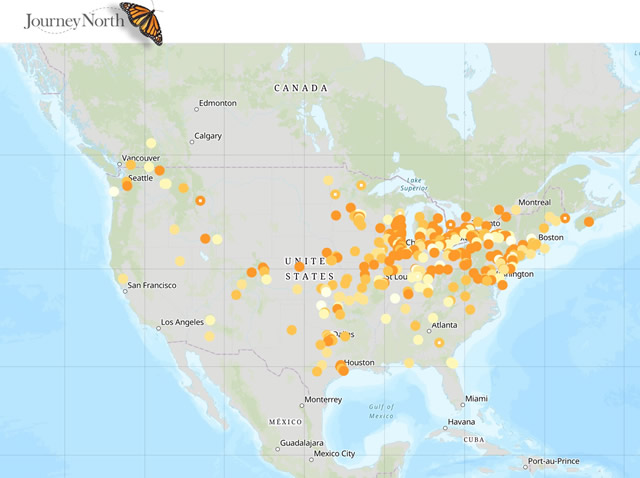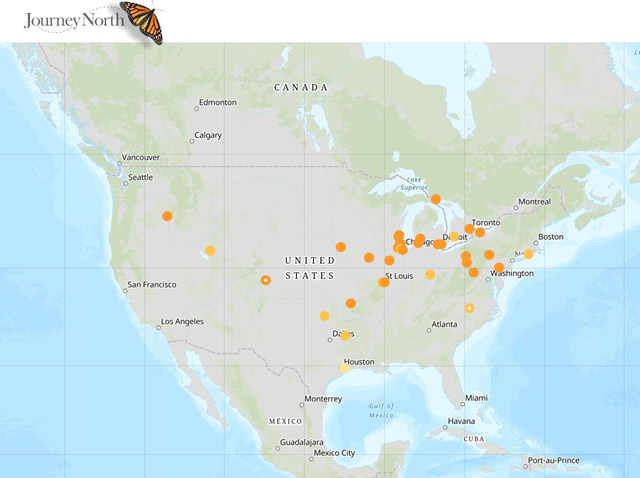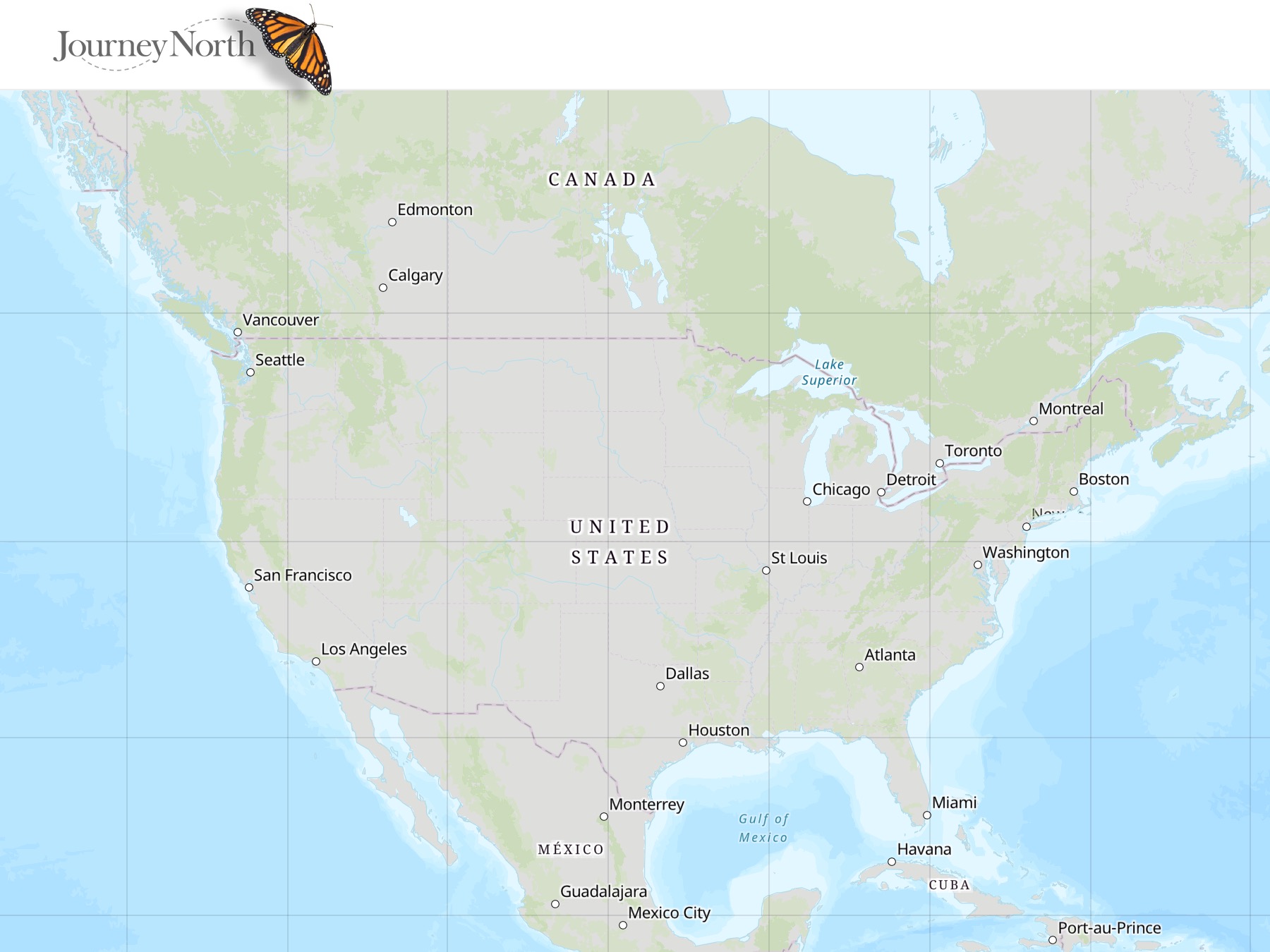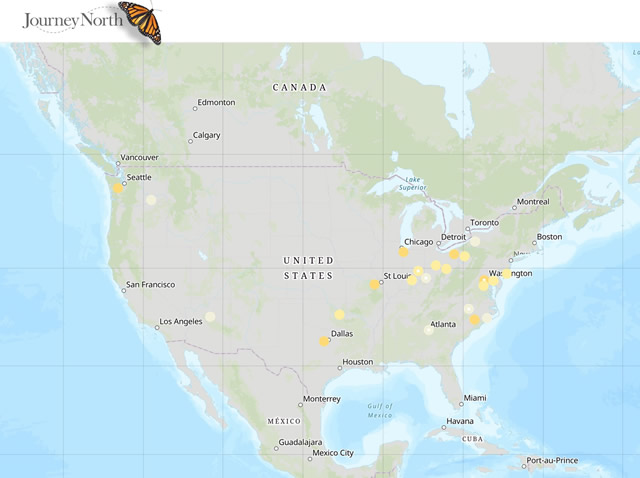Home and Nesting
Happy May 1st
We have now heard from our most northern Journey North citizen scientist that American Robins have been observed in Alaska.
From Shageluk, AK: Joyanne reported, "We heard our first Robin on this beautiful morning! I just wanted to let you know that in a village about 30 miles west of us, people have posted photos of a single Robin in Grayling, Alaska since April 18. It's been an interesting start to the migration with some early Tundra Swans flying high overhead which means they are going further west to the coastal nesting areas in the Bering Sea. Juncos arrived this week on Monday, April 22. They must have known it was Earth Day!" (04/25/2019)
From Delta Junction, AK: Christy commented, "We just heard [our first] Robin song..." (04/25/2019)
More Blue Eggs and a Few Babies Sighted!
Despite questionable spring weather, robins continue to journey north, build nests and raise babies.
Female robins lay 3 to 7 blue eggs per clutch. The eggshell color comes from pigments in the mother robin’s blood! Hemoglobin from ruptured blood cells is transformed into “bile pigments,” which are carried by the robin’s blood to where the eggshell forms.
From Carthage, IN: John found "Robins built a nest in our spruce tree." (04/27/2019)
The female robin is in charge of incubation. Male robins do not brood eggs. Incubation lasts for 12-14 days from the time the last egg is laid. Females spend about 50 minutes of every hour incubating with the rest of the time searching for food.
From Bedford, IN: Jacqueline observed, "2 of 4 eggs hatched, these are now 8 days old." (04/27/2019)
Only One Month Remains
We have only one more month remaining to track American Robin migration and nesting behavior. Please keep reporting your sightings!


